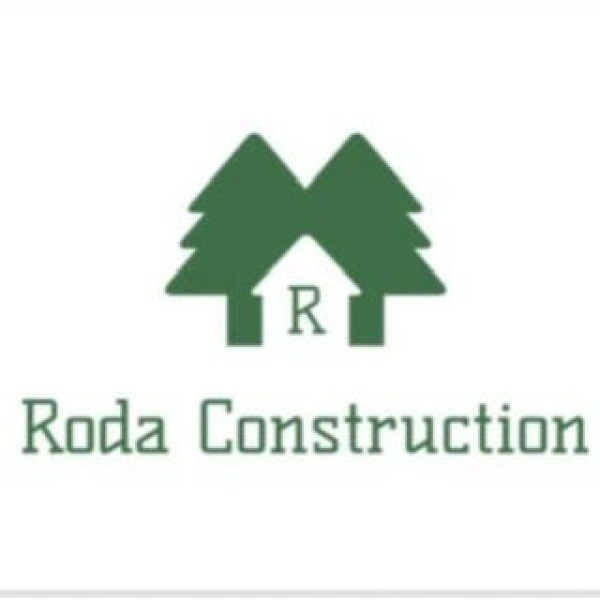Garden Fencing in Thame
Welcome to Haskins Wood Works, your premier choice for top-notch joinery and landscaping services in the heart of Didcot... read more »
Welcome to Roda Construction Ltd, your go-to experts for all things carpentry and construction in the heart of Haddenham, Buckinghamshire... read more »
Welcome to Cherry Tree Contractors LTD, your trusted partner for all building and landscaping needs in Brill and throughout Buckinghamshi... read more »
Welcome to Any Landscaping, your premier choice for t... read more »
Smarts Properties Development Ltd, p... read more »
Welcome to Rolstone Construction, the premier choice... read more »
Welcome to SXN Property Maintenance, your trusted par... read more »
Welcome to D P M, your go-to experts for roofing and... read more »
Atlas Fencing & Paving is a premier... read more »
Welcome to Deluxe Developing, your go-to experts for... read more »
Welcome to Kennington Fencing and Landscaping, your g... read more »
Apex Fencing and Landscaping is your... read more »
Welcome to H&S Fencing And Sheds, your trusted carpen... read more »
Home & Country Fencing is a renowned... read more »
Welcome to Omega Driveway Solutions, your premier cho... read more »
Welcome to Four Seasons Drives And Roofing Ltd, your... read more »
Welcome to Landscape Gardeners Oxford, your go-to exp... read more »
Welcome to Homeandgardencare, your premier choice for... read more »
Search Garden Fencing in places nearby
Introduction to Garden Fencing in Thame
Garden fencing in Thame is more than just a boundary marker; it's an essential part of the landscape that enhances both the aesthetic appeal and functionality of your outdoor space. Whether you're looking to keep pets safe, add privacy, or simply beautify your garden, the right fencing can make all the difference. In this article, we'll explore the various aspects of garden fencing in Thame, from choosing the right materials to understanding local regulations, ensuring you have all the information needed to make an informed decision.
The Importance of Garden Fencing
Garden fencing serves multiple purposes, each crucial to maintaining a harmonious outdoor environment. Firstly, it provides security, keeping unwanted visitors out and ensuring children and pets remain safe within the garden. Secondly, it offers privacy, allowing you to enjoy your outdoor space without prying eyes. Lastly, it enhances the aesthetic appeal of your garden, complementing the natural beauty of your plants and landscaping features.
Security and Safety
One of the primary reasons homeowners in Thame invest in garden fencing is to enhance security. A well-constructed fence acts as a deterrent to potential intruders and provides a safe enclosure for children and pets. By choosing a sturdy material and design, you can significantly increase the security of your property.
Privacy and Peace
Privacy is a valuable commodity, especially in residential areas. Garden fencing allows you to create a secluded oasis where you can relax without worrying about neighbours or passersby. Tall fences or those with dense foliage can effectively block out unwanted views and noise, creating a peaceful retreat.
Aesthetic Appeal
Beyond functionality, garden fencing can greatly enhance the visual appeal of your garden. With a variety of styles, colours, and materials available, you can choose a fence that complements your home's architecture and landscaping. Whether you prefer a classic wooden picket fence or a modern metal design, the right choice can elevate the overall look of your garden.
Choosing the Right Materials for Garden Fencing
When it comes to selecting materials for garden fencing in Thame, there are several options to consider. Each material has its own set of advantages and drawbacks, so it's important to weigh these factors carefully before making a decision.
Wooden Fences
Wooden fences are a popular choice due to their natural appearance and versatility. They can be painted or stained to match your garden's aesthetic and are relatively easy to install. However, they require regular maintenance to prevent rot and weather damage.
Metal Fences
Metal fences, such as those made from aluminium or wrought iron, offer durability and a modern look. They are low-maintenance and can withstand harsh weather conditions. On the downside, they may not provide as much privacy as other materials unless combined with additional elements like climbing plants.
Vinyl Fences
Vinyl fencing is known for its durability and low maintenance requirements. It is resistant to rot, insects, and weather damage, making it a long-lasting option. While it may have a higher upfront cost, its longevity can make it a cost-effective choice in the long run.
Composite Fences
Composite fencing combines wood fibres and plastic to create a material that mimics the appearance of wood while offering enhanced durability. It requires less maintenance than traditional wood and is resistant to rot and insects. However, it can be more expensive than other options.
Understanding Local Regulations and Planning Permissions
Before installing garden fencing in Thame, it's important to understand the local regulations and planning permissions that may apply. These rules are in place to ensure that fencing is safe, aesthetically pleasing, and in harmony with the surrounding environment.
Height Restrictions
In Thame, there are specific height restrictions for garden fences, particularly those facing public roads. Typically, fences in front gardens should not exceed 1 metre in height, while those in rear gardens can be up to 2 metres. It's essential to check with the local council for any specific requirements in your area.
Boundary Agreements
When installing a fence along a shared boundary, it's important to communicate with your neighbours. Boundary agreements can help prevent disputes and ensure that both parties are satisfied with the fencing solution. It's also a good idea to have any agreements documented in writing.
Conservation Areas and Listed Buildings
If your property is located in a conservation area or is a listed building, additional restrictions may apply. In such cases, you may need to obtain planning permission before installing a new fence or making significant changes to an existing one. Consulting with the local planning authority can provide guidance on the necessary steps.
Designing Your Garden Fence
Designing a garden fence involves more than just choosing a material and height. It's about creating a cohesive look that enhances your garden's overall aesthetic. Consider factors such as colour, style, and additional features to create a fence that complements your outdoor space.
Colour and Finish
The colour and finish of your fence can have a significant impact on the overall look of your garden. Natural wood finishes offer a classic look, while painted fences can add a pop of colour. Consider the existing colours in your garden and choose a finish that complements them.
Style and Design
From traditional picket fences to modern horizontal slats, there are countless styles to choose from. Consider the architectural style of your home and the overall theme of your garden when selecting a fence design. A cohesive style can enhance the visual appeal of your outdoor space.
Incorporating Plants and Features
Incorporating plants and features into your fence design can add an extra layer of beauty and functionality. Climbing plants, such as ivy or roses, can soften the appearance of a fence and add natural charm. Additionally, features like trellises or decorative panels can enhance the visual interest of your fence.
Installation and Maintenance of Garden Fencing
Proper installation and maintenance are crucial to ensuring the longevity and effectiveness of your garden fence. Whether you choose to install the fence yourself or hire a professional, understanding the installation process and maintenance requirements is essential.
DIY Installation vs. Professional Installation
Deciding whether to install your fence yourself or hire a professional depends on your skills, budget, and the complexity of the project. DIY installation can save money but requires time and effort. Professional installation ensures a high-quality result and can be more efficient for larger or more complex projects.
Regular Maintenance
Regular maintenance is key to keeping your fence in good condition. Wooden fences require periodic staining or painting to protect against weather damage, while metal fences may need rust prevention treatments. Regularly inspect your fence for damage and make repairs as needed to prolong its lifespan.
Seasonal Care
Different seasons can affect your fence in various ways. In winter, heavy snow and ice can put pressure on the structure, while summer heat can cause warping or fading. Taking seasonal care measures, such as clearing snow or applying UV protection, can help maintain your fence's integrity year-round.
Cost Considerations for Garden Fencing
The cost of garden fencing in Thame can vary widely depending on factors such as materials, size, and installation method. Understanding these cost considerations can help you budget effectively and choose a fencing solution that meets your needs without breaking the bank.
Material Costs
Different materials come with different price tags. Wooden fences are generally more affordable but require ongoing maintenance, while metal and composite fences have higher upfront costs but offer greater durability. Consider the long-term costs when choosing a material.
Installation Costs
Installation costs can vary depending on whether you choose to DIY or hire a professional. Professional installation typically costs more but ensures a high-quality result. If you opt for DIY, consider the cost of tools and materials needed for the installation.
Maintenance Costs
Ongoing maintenance costs should also be factored into your budget. Wooden fences may require regular staining or painting, while metal fences may need rust prevention treatments. Consider these costs when evaluating the overall cost of your fencing project.
Environmental Considerations
As environmental awareness grows, many homeowners are seeking eco-friendly fencing options. From sustainable materials to energy-efficient production methods, there are several ways to make your garden fencing project more environmentally friendly.
Sustainable Materials
Choosing sustainable materials, such as FSC-certified wood or recycled metal, can reduce the environmental impact of your fencing project. These materials are sourced responsibly and have a lower carbon footprint than traditional options.
Energy-Efficient Production
Some fencing materials are produced using energy-efficient methods, reducing their environmental impact. Look for manufacturers that prioritise sustainable production practices and use renewable energy sources.
Recycling and Disposal
When replacing an old fence, consider recycling or repurposing the materials. Many fencing materials can be recycled, reducing waste and conserving resources. Proper disposal of non-recyclable materials is also important to minimise environmental impact.
Frequently Asked Questions
- What is the best material for garden fencing in Thame? The best material depends on your specific needs and preferences. Wood offers a natural look, metal provides durability, and vinyl requires low maintenance.
- Do I need planning permission for a garden fence in Thame? Planning permission is generally not required for fences under 2 metres in height, but it's important to check local regulations, especially in conservation areas.
- How can I maintain my wooden fence? Regular staining or painting, along with inspections for damage, can help maintain a wooden fence. Protecting it from moisture and pests is also important.
- Can I install a garden fence myself? Yes, DIY installation is possible, but it requires time, effort, and the right tools. Professional installation ensures a high-quality result.
- How do I choose the right fence style? Consider the architectural style of your home and the overall theme of your garden. A cohesive style enhances the visual appeal of your outdoor space.
- What are eco-friendly fencing options? Sustainable materials like FSC-certified wood and recycled metal, along with energy-efficient production methods, are eco-friendly options for garden fencing.
Final Thoughts on Garden Fencing in Thame
Garden fencing in Thame is a multifaceted topic that encompasses security, privacy, aesthetics, and environmental considerations. By understanding the various aspects of fencing, from material selection to local regulations, you can make informed decisions that enhance your outdoor space. Whether you're looking to create a safe haven for your family, add a touch of elegance to your garden, or contribute to environmental sustainability, the right garden fence can make all the difference. With careful planning and consideration, you can create a beautiful and functional garden that meets your needs and reflects your personal style.
Send a message






